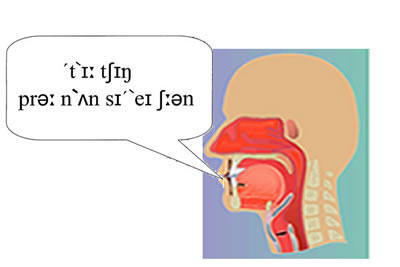The Key to Teaching Pronunciation
Pronunciation is often a neglected area for English-language learners, both seemingly by the teacher and the learner. A kind of complicity takes place that both parties strike a deal that the teacher won't get hung up on the different ways to pronounce 'th', as long as the learner doesn't mention it either.
Teachers can find pronunciation to be a difficult aspect of the language to deal with and consequently can avoid it altogether. The difficulty perhaps stems from hearing an 'error' but not being able to immediately isolate exactly what is happening to cause the mispronunciation and being able to correct it. If you are not familiar with the phonemic alphabet then it is a useful tool for both the teacher and learner. There is an online one here from the British Council.
A colleague recently gave a fascinating training session on pronunciation. She went through the anatomical aspects of it -- what goes where when we make each sound, and the differences between voiced, unvoiced plosive and implosive sounds. It's a lot to remember and perhaps only appeals to some but there is no doubt that an understanding of physiological element of speaking will aid teaching and correcting pronunciation. She then showed us some minimal pairs and asked us, in pairs ;), to identify what our mouths were doing when we created the different sounds.Teachers can find pronunciation to be a difficult aspect of the language to deal with and consequently can avoid it altogether. The difficulty perhaps stems from hearing an 'error' but not being able to immediately isolate exactly what is happening to cause the mispronunciation and being able to correct it. If you are not familiar with the phonemic alphabet then it is a useful tool for both the teacher and learner. There is an online one here from the British Council.





Comments
Post a Comment